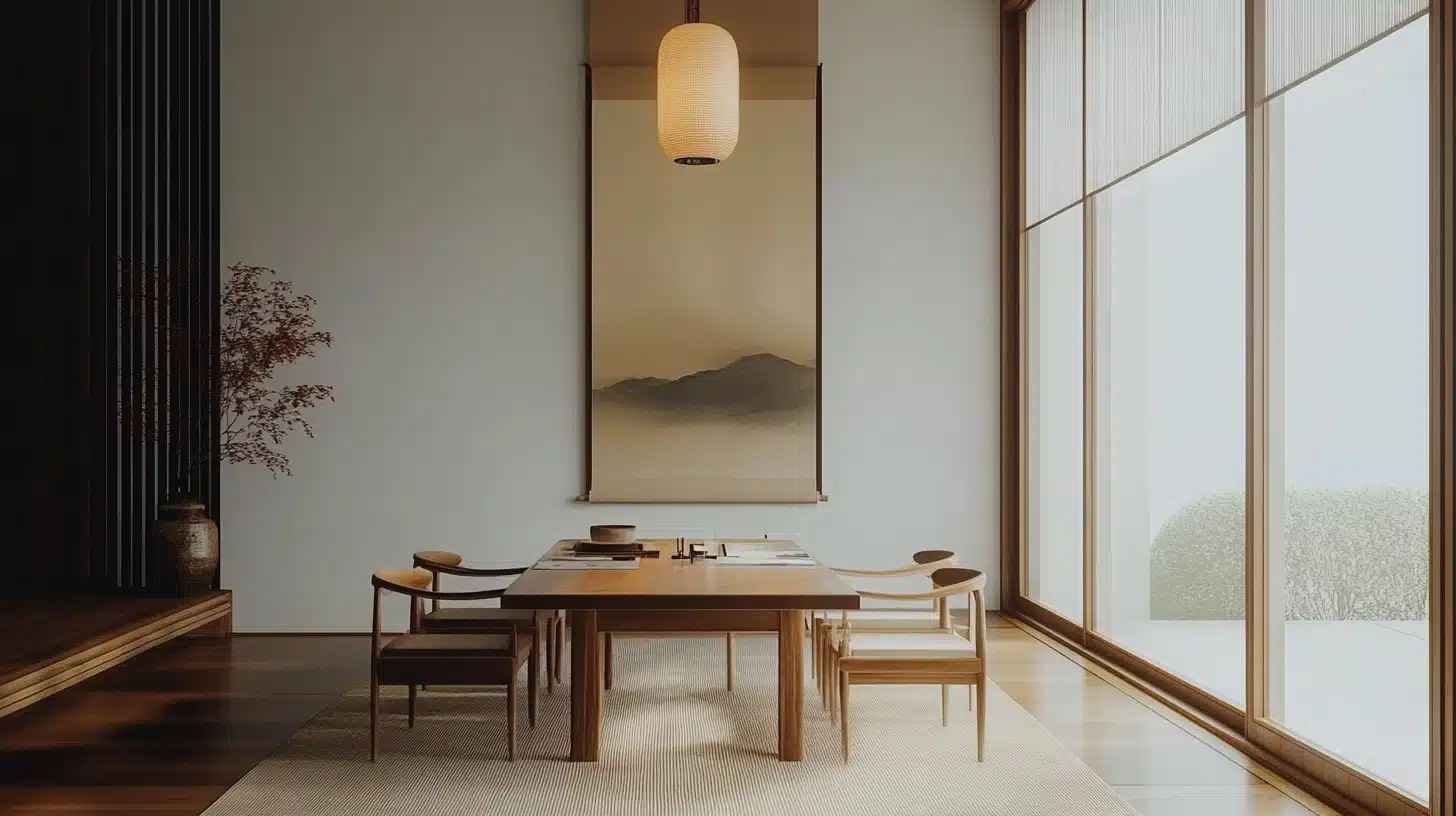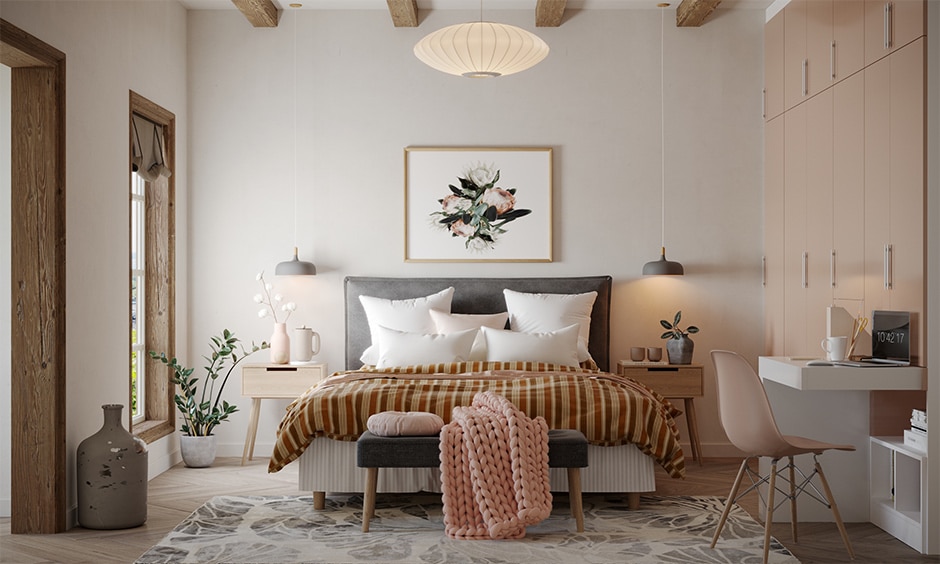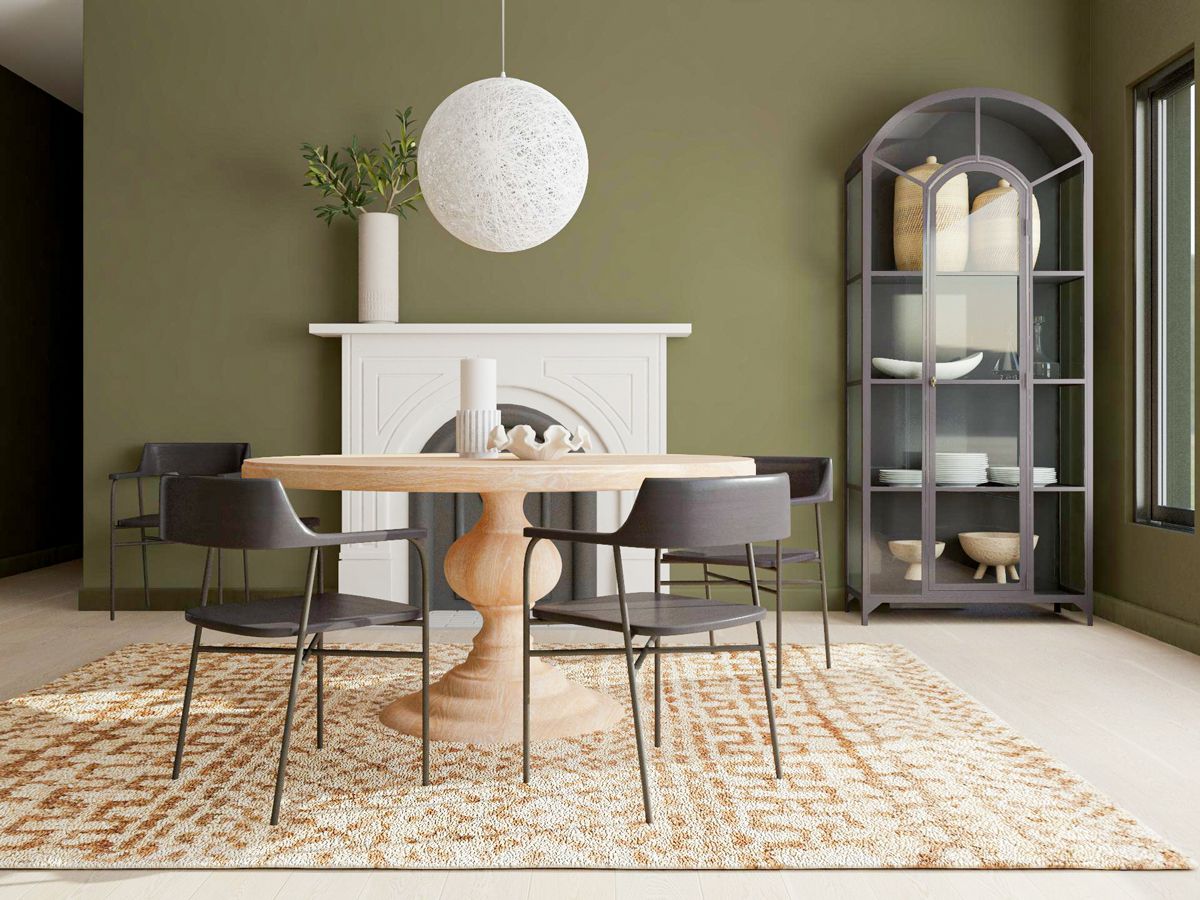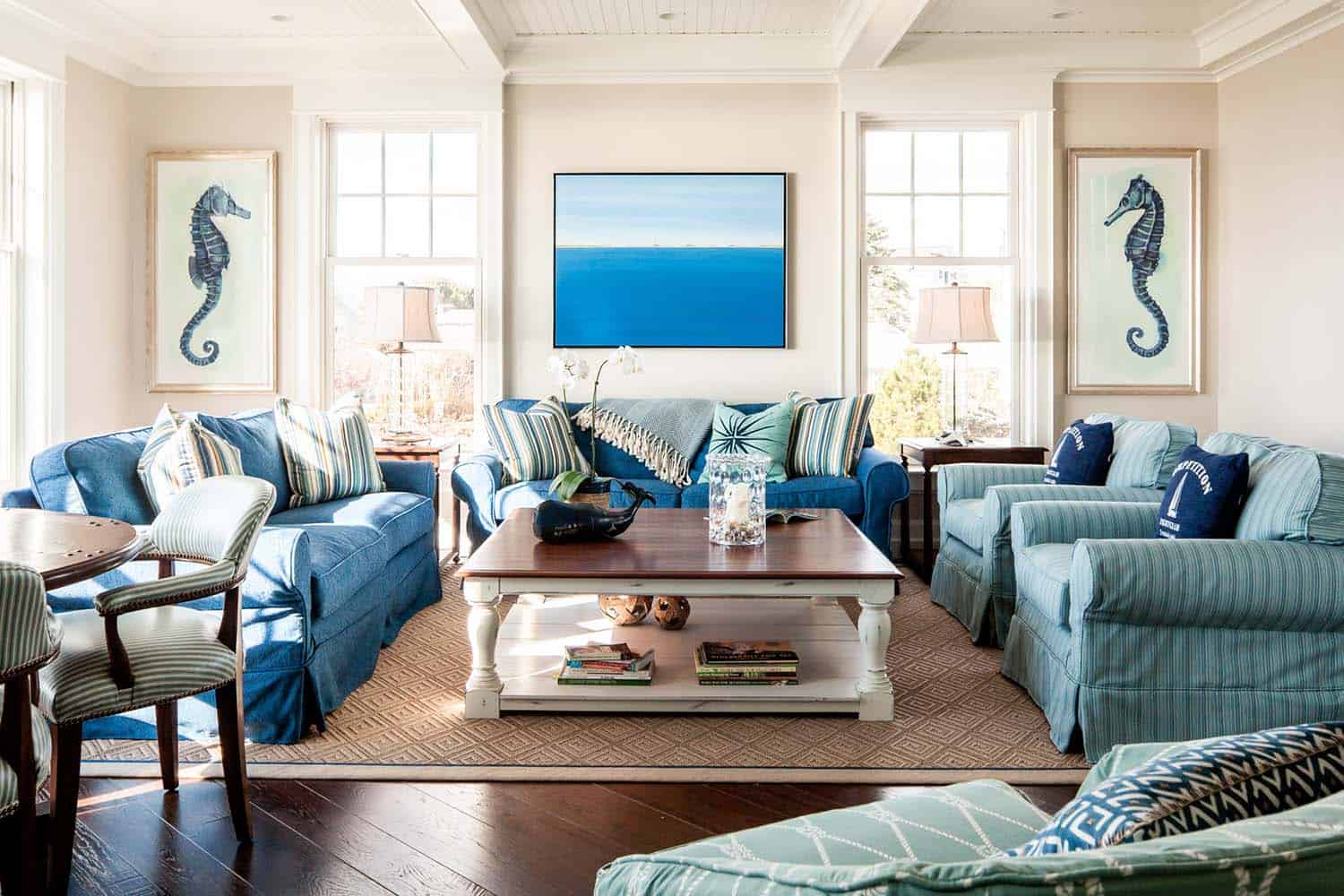Creating Serenity: A Complete Guide to Japandi Dining Room Design
The dining room plays a key role in making your home feel calm and welcoming. It’s where we gather, share meals, and make memories. If you’re looking for a style that combines beauty and function, consider Japandi design for your dining space.
Japandi is a fresh take on interior design that blends Japanese and Scandinavian styles. It combines the best of both worlds—the warm minimalism of Scandinavian decor and the subtle elegance of Japanese aesthetics. The result? a dining room that feels both cozy and uncluttered, perfect for today’s busy lifestyles.
In this guide, we’ll walk you through creating a Japandi dining room. We’ll cover everything from picking the right colors to choosing furniture that fits this Japanese-Scandinavian style.
Whether you’re starting from scratch or want to add some Japandi touches to your current dining space, we’ve got you covered.
What is Japandi Style?
Japandi design combines the best of two worlds: Japanese and Scandinavian. It values simplicity and usefulness, focusing on natural elements. In a Japandi dining room, you’ll find clean lines, soft colors, and materials that remind you of nature.
This mix creates open and peaceful spaces: picture smooth wooden tables, comfy chairs with clean shapes, and touches of greenery. Japandi style keeps things simple but never boring. Each piece in the room has a purpose, making the most of every inch.
Features of a Japandi Dining Room
Bright and Airy: Emphasis on lighting Japandi dining rooms often make the most of natural light. Large windows or glass doors can help bring the outdoors in. When it comes to artificial lighting, you might see simple pendant lights or sleek table lamps that add a warm glow without being flashy.
Nature-Inspired: Use of natural materials Wood is a star in Japandi design. You might see a dining table made of oak or ash, or chairs crafted from walnut. Other natural materials like bamboo, rattan, or stone can also play a part. These elements bring a sense of nature indoors, making the room feel more peaceful.
Tactile Appeal: Mix of textures While the overall look is smooth and simple, Japandi design uses different textures to add interest. You might see a rough ceramic bowl on a sleek wooden table, or a soft linen tablecloth next to smooth leather chairs. These contrasts make the room feel cozy and inviting.
Why Choose Japandi for Your Dining Room?
A minimalist dining room based on Japandi design offers more than just good looks. Here’s why it might be perfect for your home:
Peace and quiet: Japandi style creates a calm atmosphere. Imagine sitting down to eat in a space that helps you let go of the day’s stress.
Easy to keep tidy: With fewer items and smart storage, your dining area stays neat without much effort.
How to Incorporate Elements of Japandi Design into a Living Room
Japandi design, a fusion of Japanese minimalism and Scandinavian functionality, offers a serene and elegant aesthetic for your living space. By blending these two styles, you can create a living room that is both calming and inviting, with a focus on simplicity, natural materials, and purposeful design.
Choose a Neutral and Muted Color Palette
Base Colors: Whites, beiges, and light grays for walls and large surfaces.
Accent Hues: Muted earth tones and soft pastels to add warmth.
Focus on Textures and Layers
Layered Textiles: Mix different textures with throws and pillows in subtle patterns.
Natural Fibers: Use materials like wool, jute, or sisal for added warmth.
13 Best Japandi Dining Room Ideas
1. Organic Shapes in Dining Room
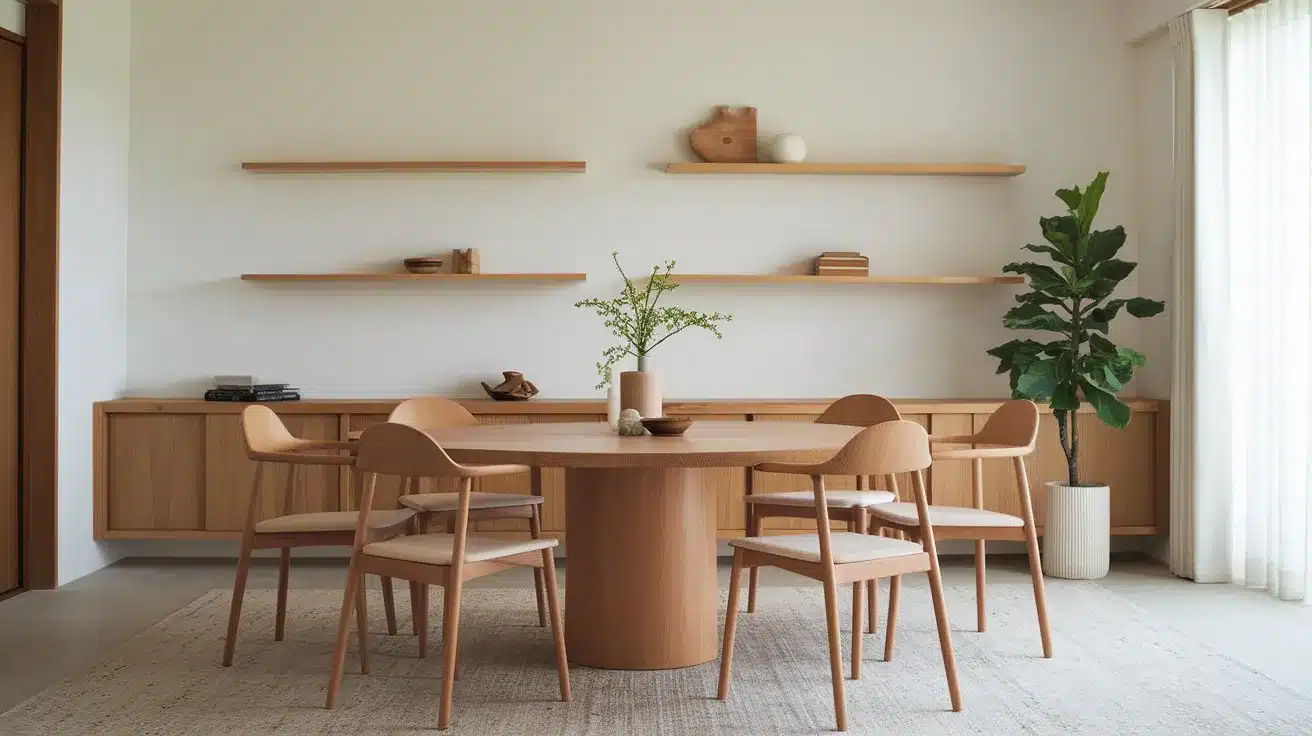
Incorporate furniture and decor with soft, natural curves. This could include a round dining table or chairs with gently curved backs.
Unique feature: These shapes create a more relaxed, inviting atmosphere and help soften the often straight lines found in minimalist designs.
2. Statement Artwork
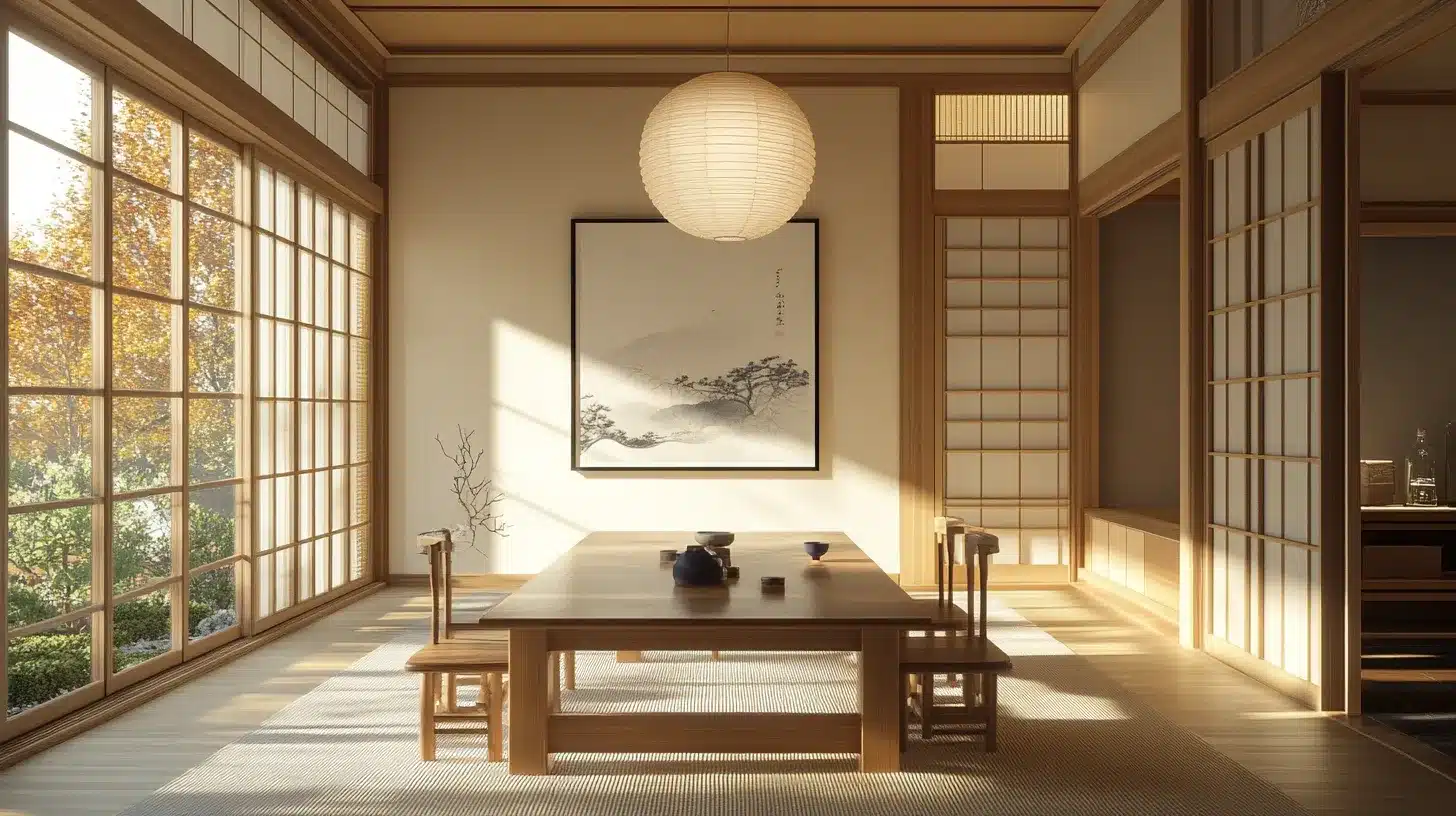
Choose a single, impactful piece of art that embodies Japandi style. This could be a large painting or print with simple lines or nature-inspired themes.
Unique theme: Opt for artwork that uses negative space effectively, mirroring the uncluttered feel of Japandi design.
3. Slanted Ceiling
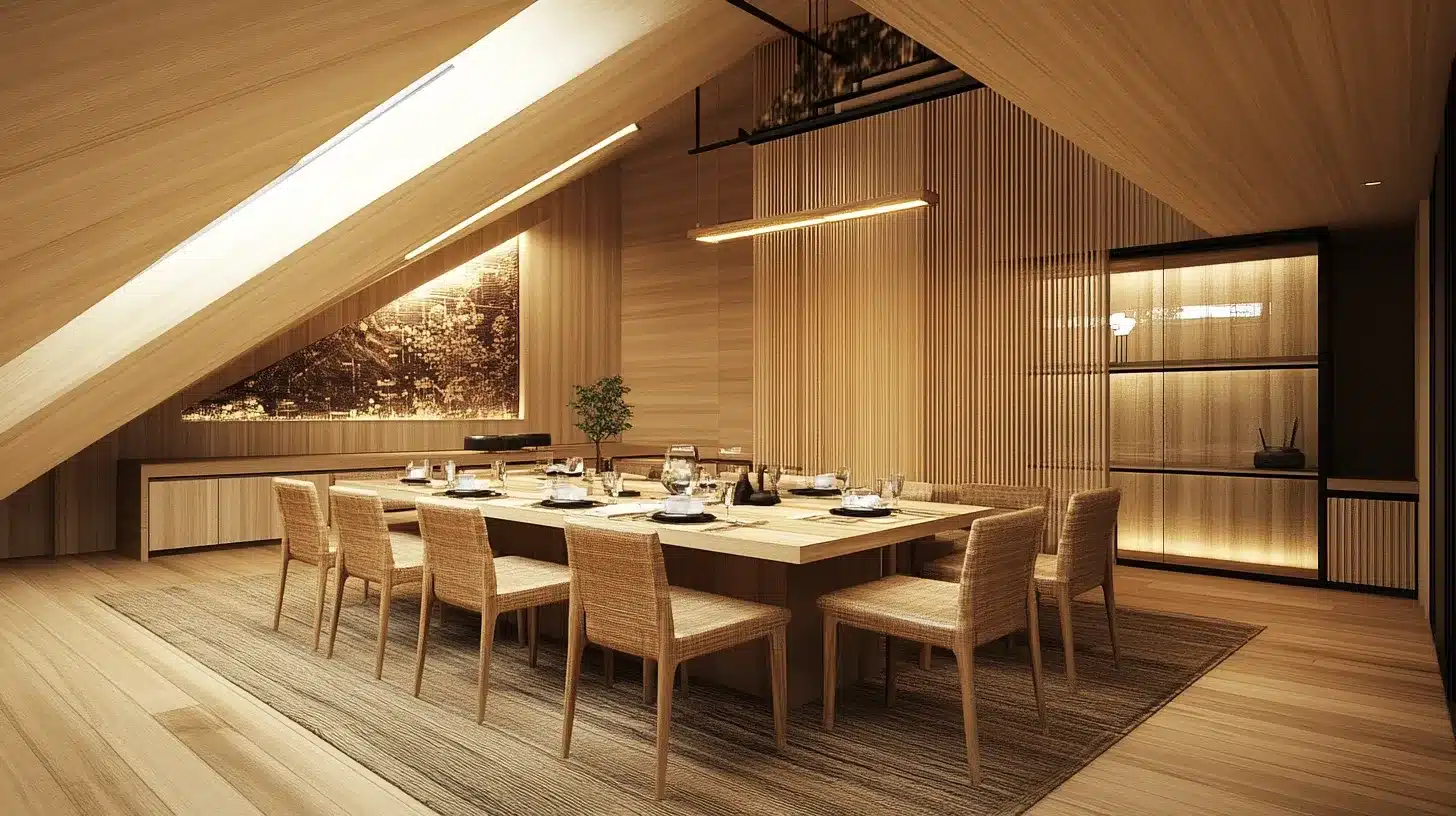
Incorporate a slanted ceiling into your Japandi dining room design. This architectural feature adds visual interest and can create a sense of openness, especially in smaller spaces.
Unique features: Use light-colored wood paneling on the slanted portion to enhance the feeling of height and airiness.
4. Wood Slat Walls
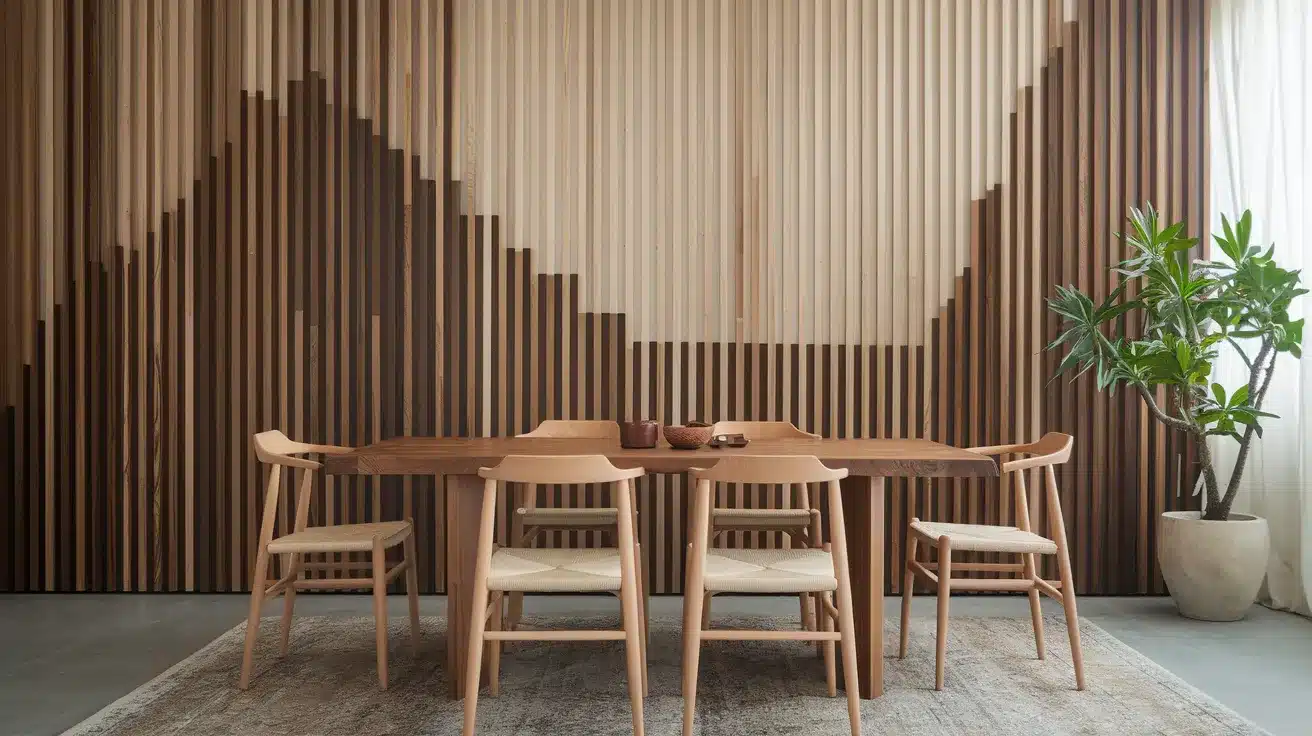
Install a wood slat wall as a backdrop to your dining area. This adds texture and warmth while maintaining a clean, structured look.
Unique theme: Use different wood tones in the slats to create a subtle pattern, adding depth to the wall without being overpowering.
5. Warm Color Palette with Globe Lantern Lighting
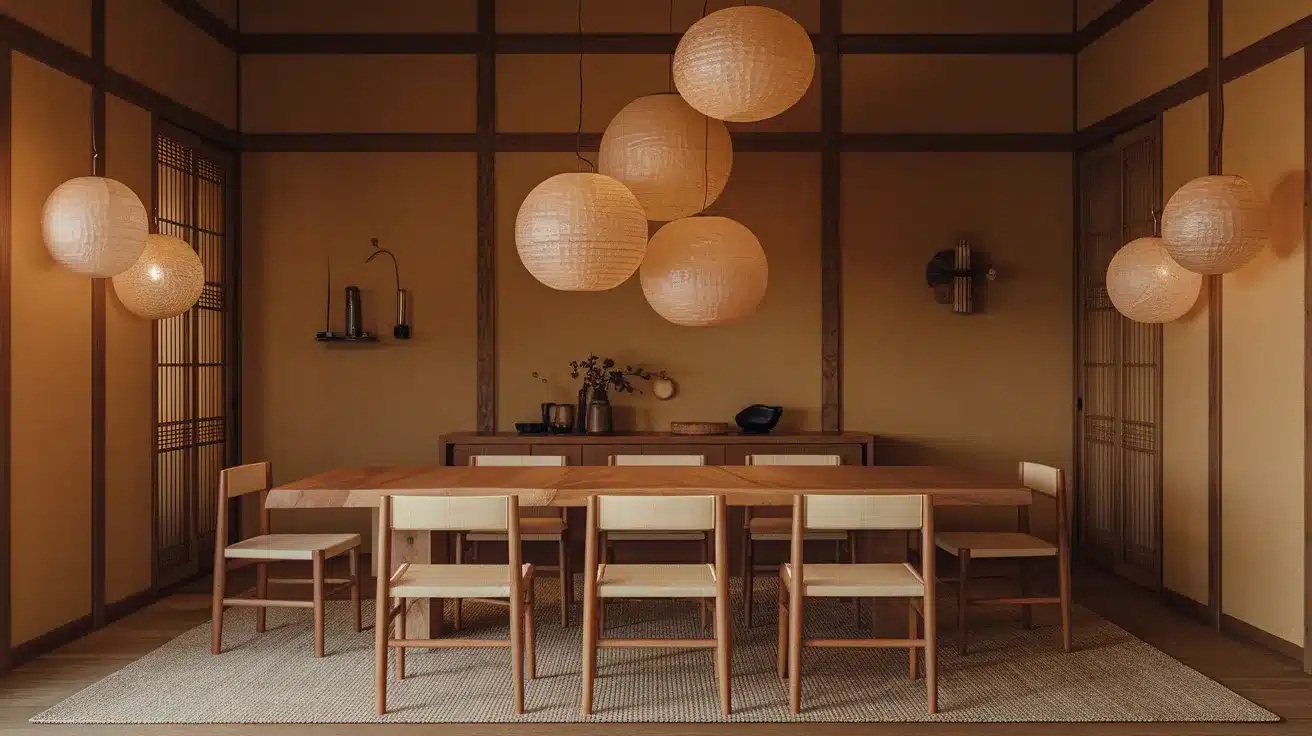
Use warm, earthy tones for walls and furniture. Pair this with globe lanterns for soft, diffused lighting.
Unique feature: Choose lanterns made of paper or textured glass to add a gentle glow and interesting shadows when lit.
6. Sliding Shoji Screens
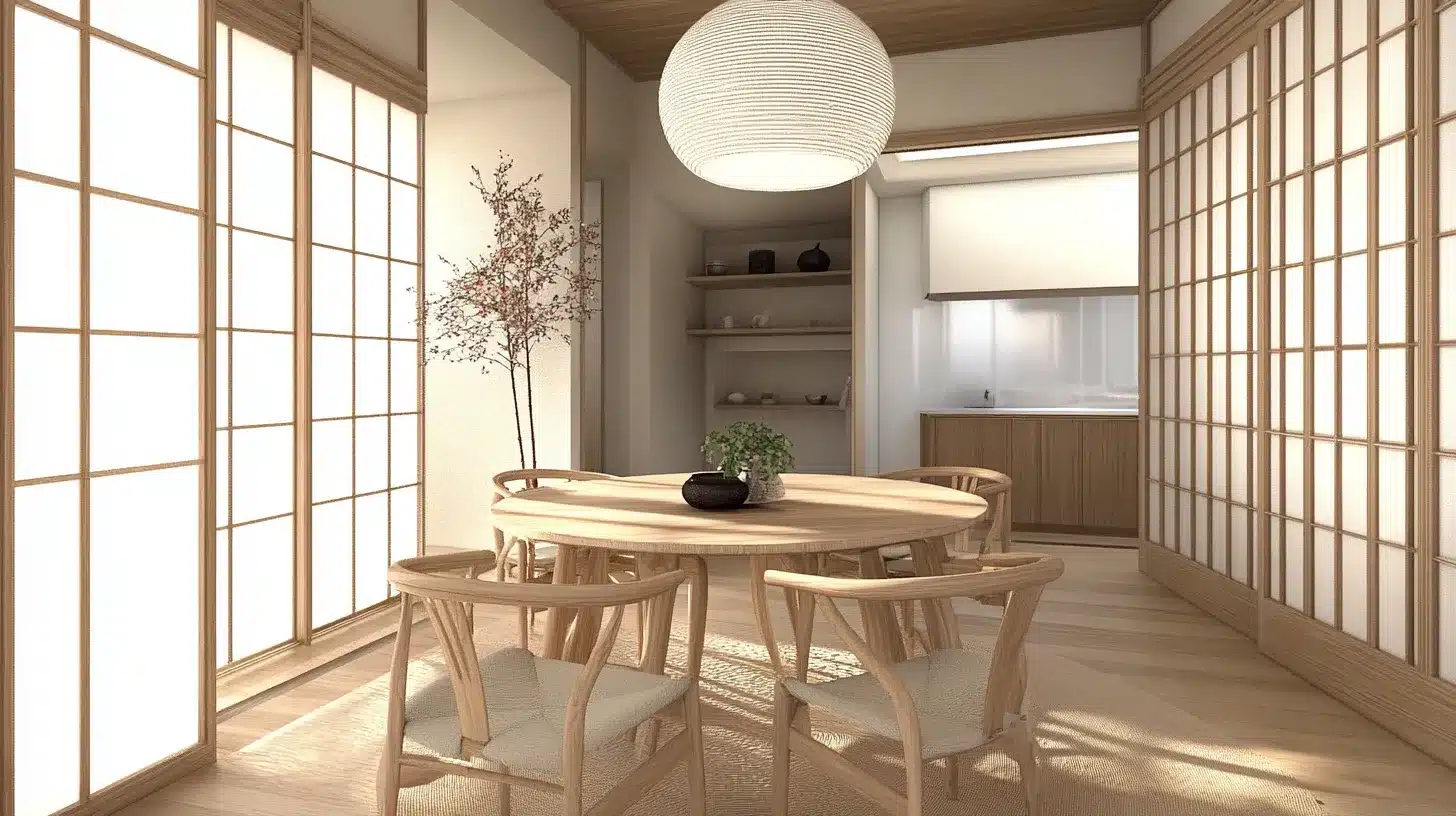
Install sliding shoji screens to divide spaces or as a decorative element. These lightweight screens add a distinctly Japanese touch.
Unique theme: Use screens with abstract or nature-inspired patterns etched into the paper for added visual interest.
7. Using Bamboo in the Furniture
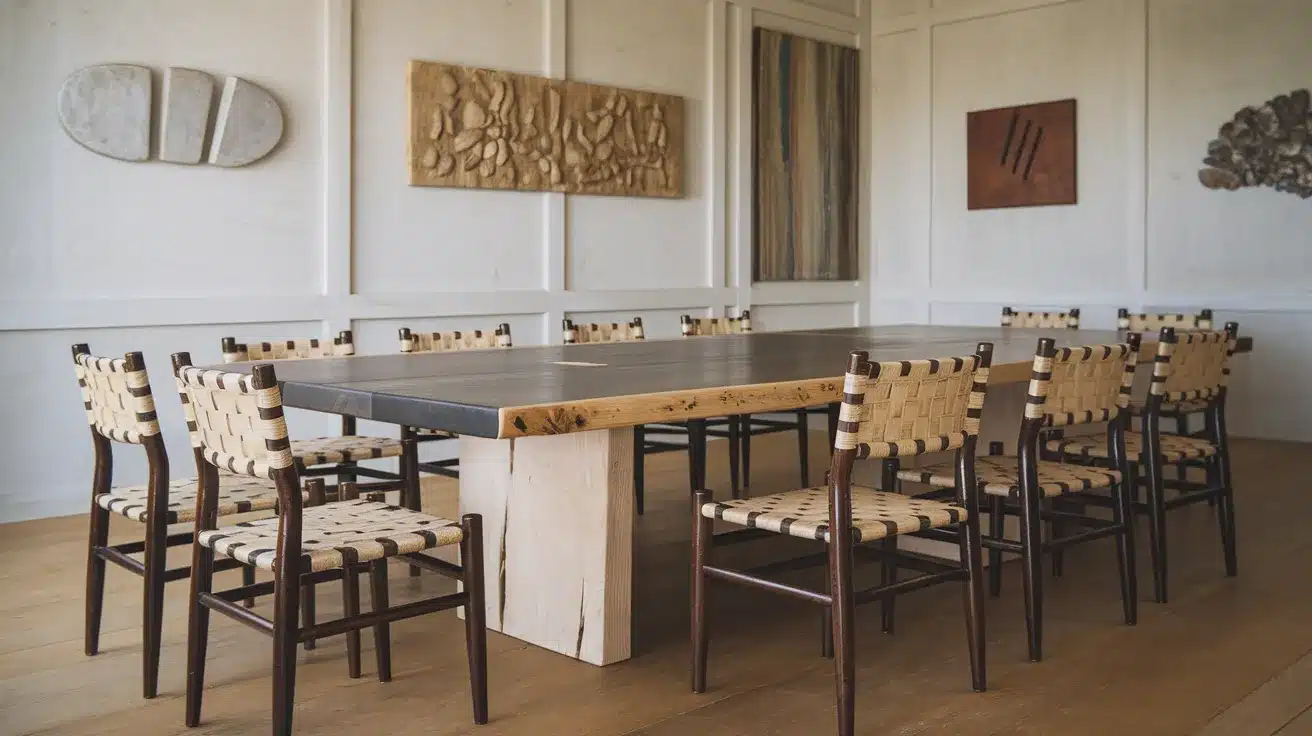
Incorporate bamboo elements in your dining furniture, such as chair legs or table bases. Bamboo is strong, sustainable, and visually appealing.
Unique feature: Look for bamboo pieces that show the natural variations in color and texture of the material.
8. Adding Floor Cushions
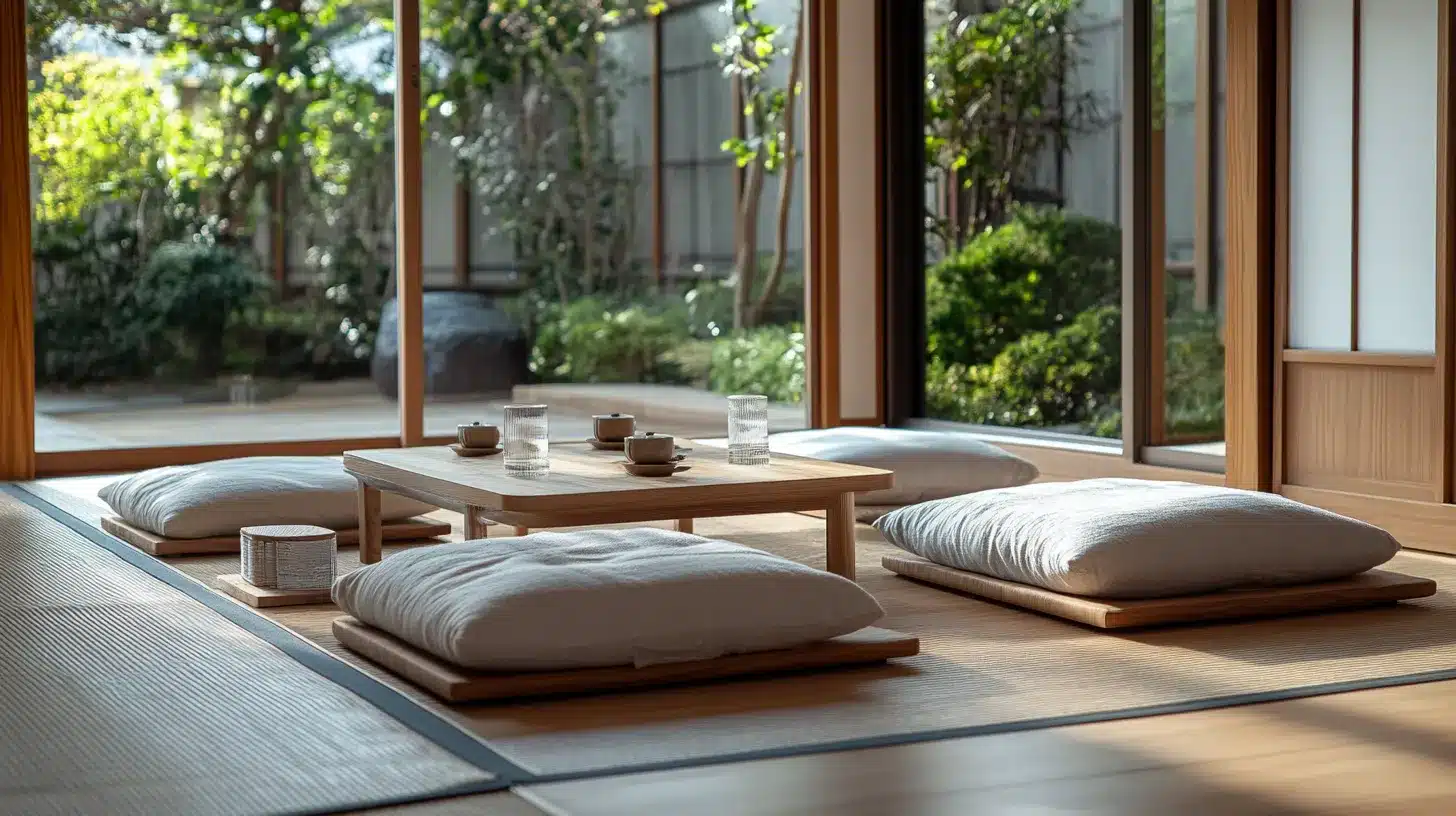
Place floor cushions near your dining area for casual seating. This nods to traditional Japanese dining customs while adding flexibility to your space.
Unique theme: Choose cushions with subtle geometric patterns inspired by Scandinavian textiles for a true Japandi blend.
9. Open Shelving
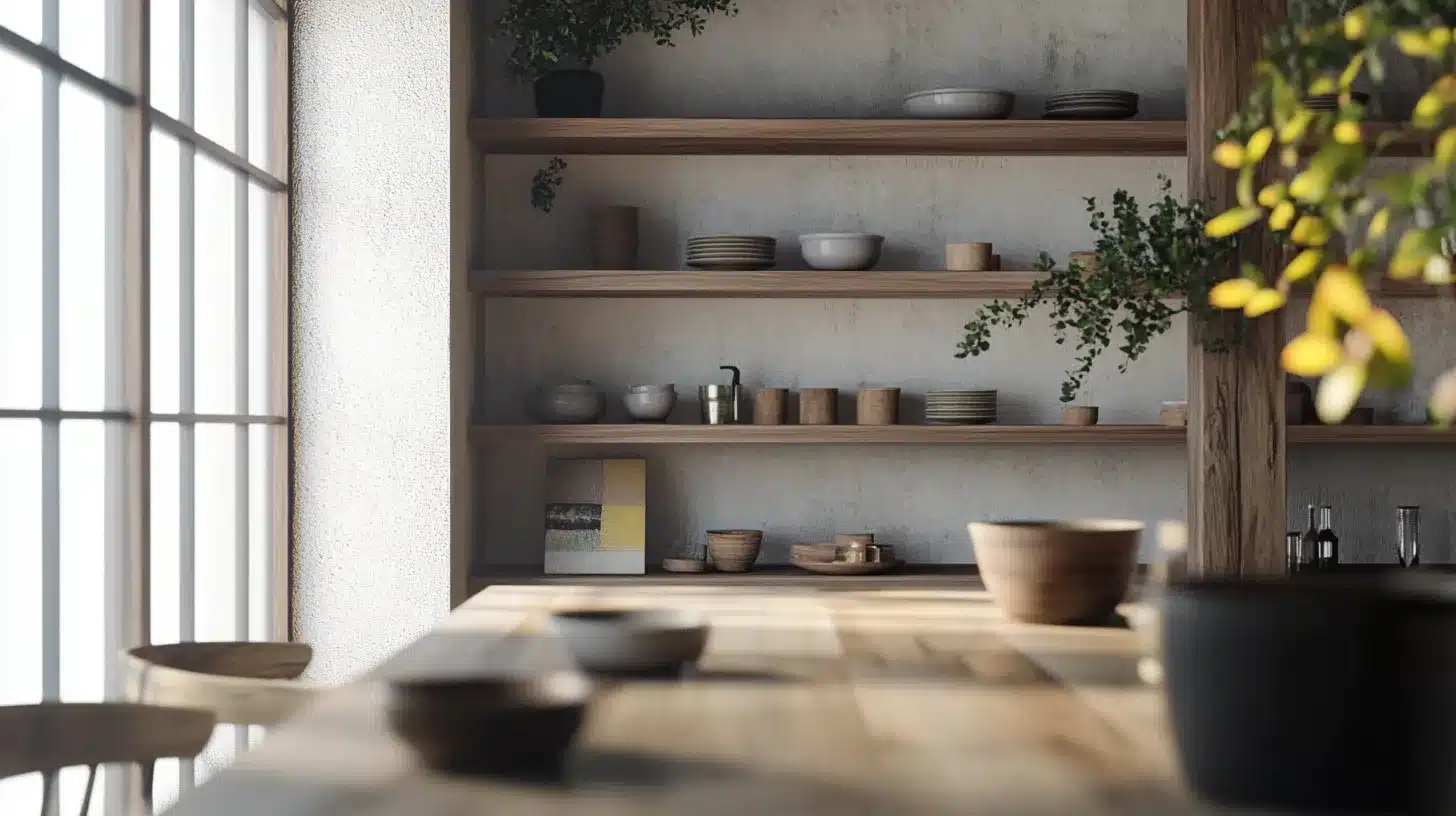
Install open shelves to display carefully curated items. This keeps the space feeling open while allowing for personal touches.
Unique feature: Use shelves with hidden brackets for a clean, floating look that aligns with Japandi simplicity.
10. Tatami Mats
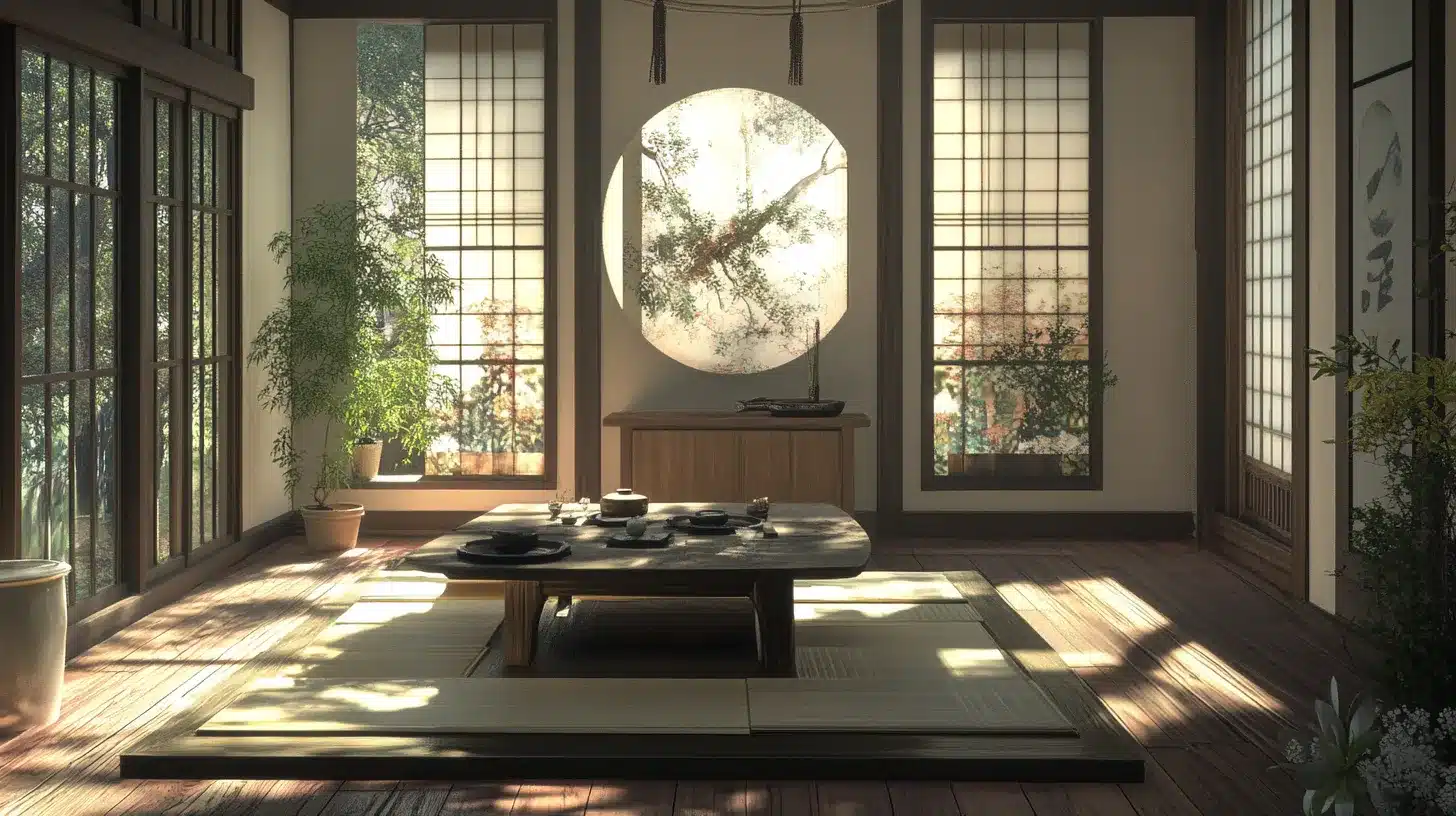
Add tatami mats in areas adjacent to the dining space. These traditional Japanese floor coverings bring texture and a sense of calm.
Unique theme: Create a small, raised tatami area near your dining space for a multi-level effect that defines different zones in your room.
11. Earthy Tones
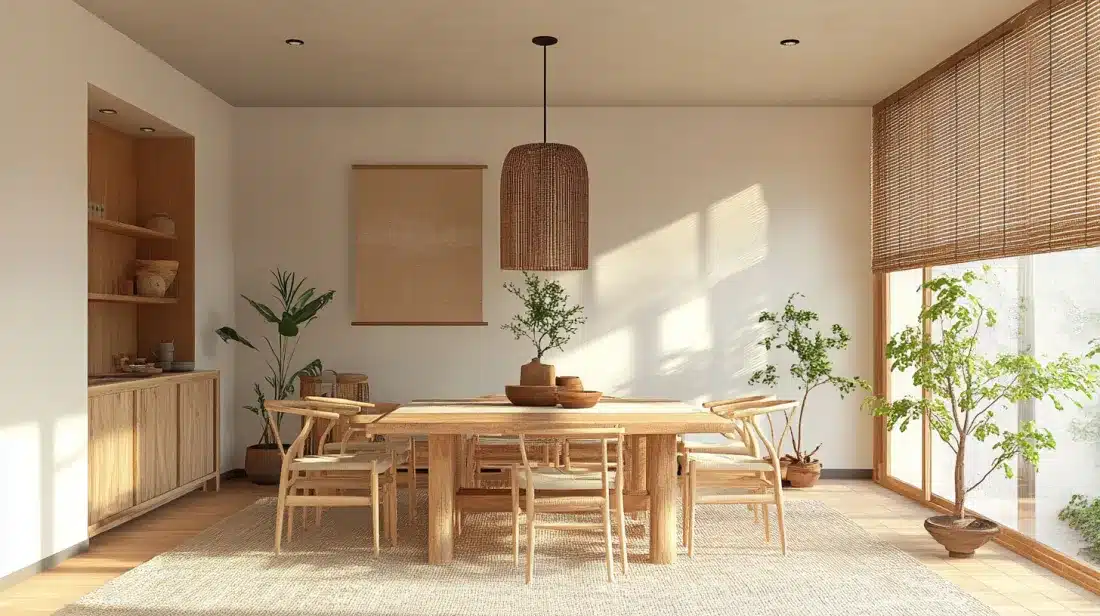
Use a palette of earthy colors like clay, sand, and stone throughout your dining room. This grounds the space and creates a serene atmosphere.
Unique feature: Incorporate these tones through natural materials like unglazed ceramics or linen textiles for added depth.
12. Adding Handcrafted Elements
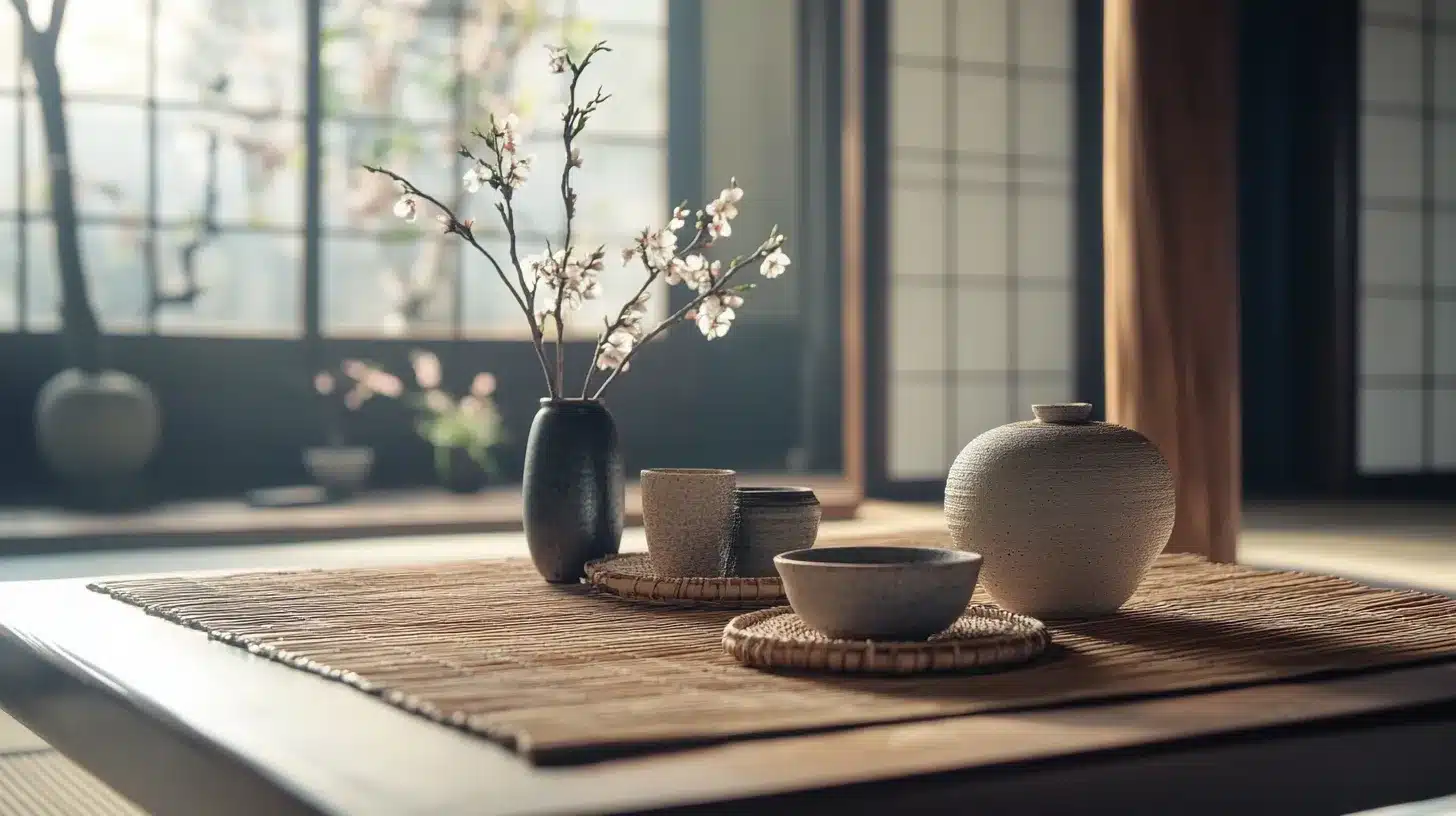
Include pieces that showcase craftsmanship, such as hand-thrown pottery or hand-woven baskets. This adds character and warmth to the space.
Unique theme: Embrace the Japanese concept of wabi-sabi by choosing items that celebrate imperfections and natural aging.
13. Japanese Calligraphy Art
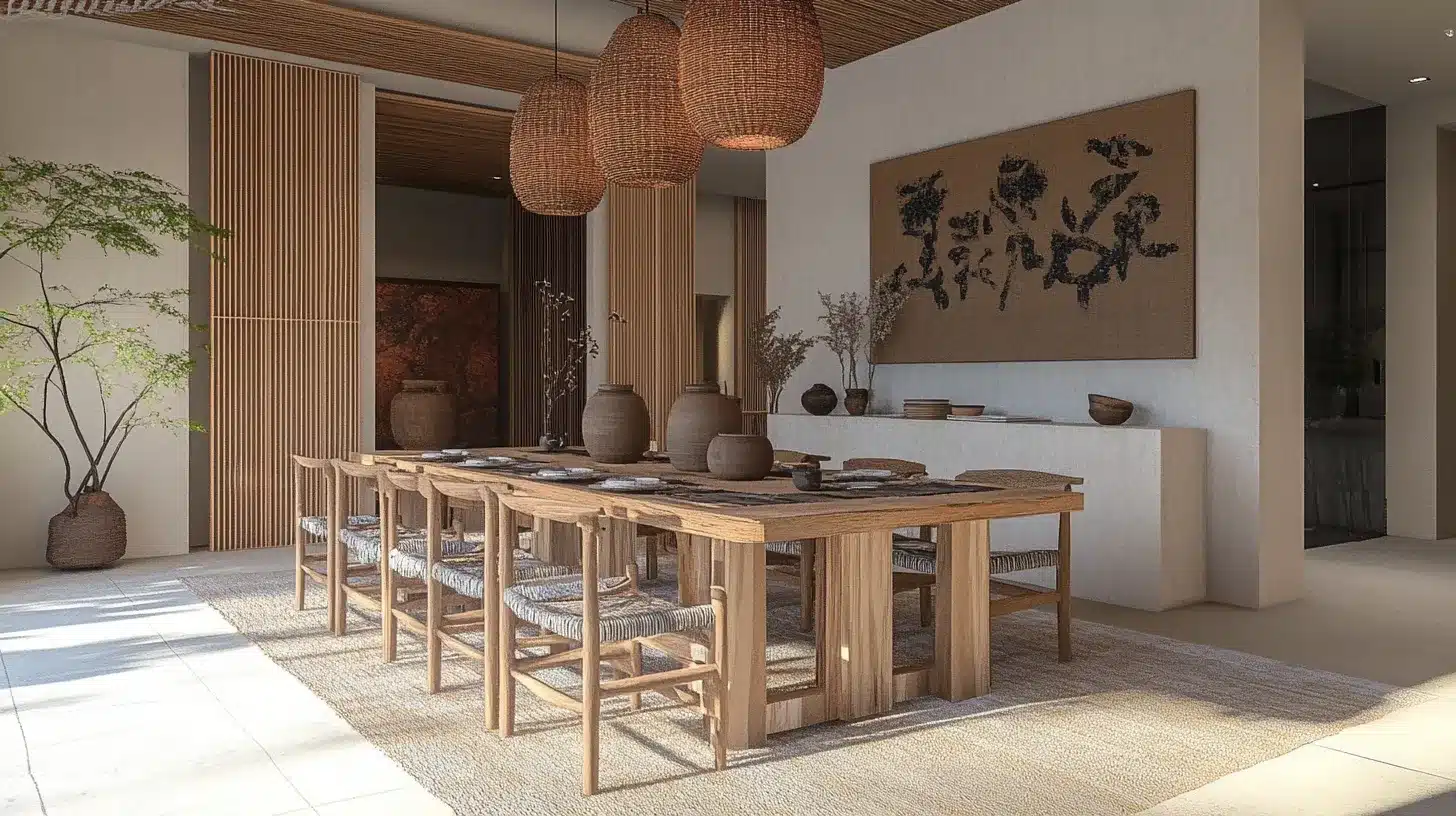
Hang Japanese calligraphy as a focal point or subtle decor element. This adds a cultural touch and can serve as a conversation starter.
Unique feature: To tie the Japandi theme together, choose calligraphy that represents concepts important in both Japanese and Scandinavian cultures, such as harmony or simplicity.
Japandi Dining Room Furniture Recommendations
Dining Tables
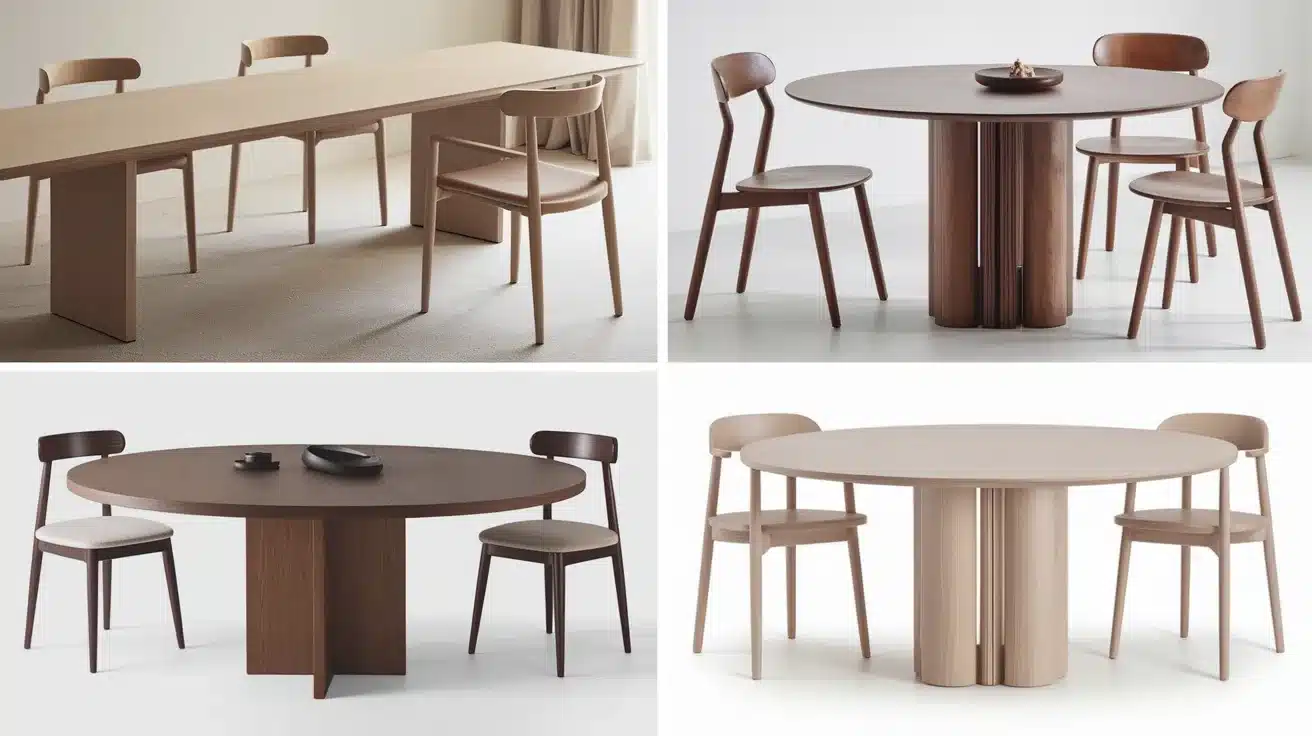
| Design Features | Styles |
|---|---|
| Simple, minimalist design Made from natural woods like oak, ash, or walnut Clean lines and smooth surfaces No ornate details |
Rectangular or Oval Tables: Offer functionality with a sleek appearance Low-profile Tables: Inspired by traditional Japanese dining for authenticity |
Dining Chairs
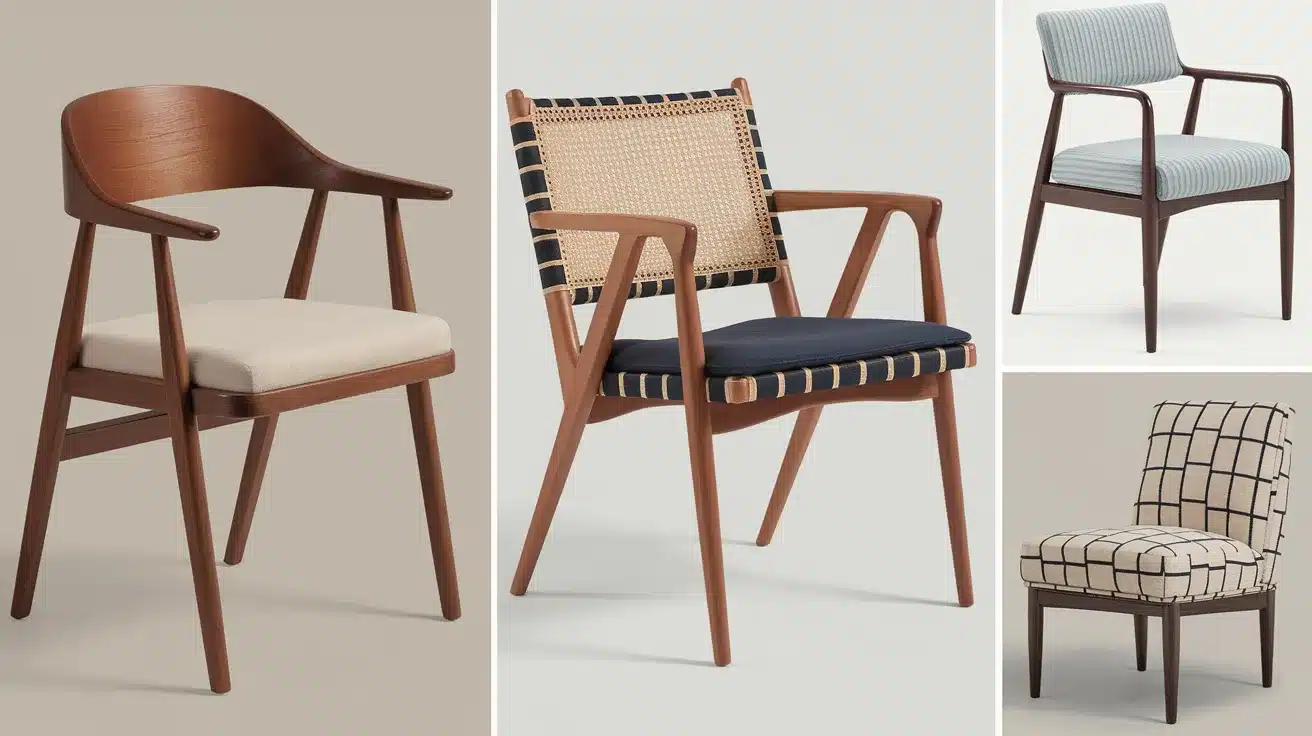
| Design Features | Styles |
|---|---|
| Minimalist silhouettes Comfortable designs Natural wood materials Neutral-toned upholstery |
Wooden Chairs: Simple, without excessive embellishments Bench Seating: Wooden bench enhances communal feel Upholstered Seats: Subtle fabric cushions for added comfort |
Storage and Sideboards
| Design Features | Styles |
|---|---|
| Flat fronts Minimal hardware Uncluttered look |
Natural Wood Sideboards: Match light or dark wood with your dining table Open Shelving: Floating shelves to display minimalist decor or dinnerware |
Where to Find Japandi Dining Room Furniture
1. Specialty Stores
Muji: Known for minimalist Japanese designs, offering furniture and accessories suitable for a Japandi aesthetic.
IKEA: Offers Scandinavian-style furniture that complements Japandi design principles.
HAY: Provides modern, minimalist furniture with clean lines and high-quality materials.
2. Online Retailers
West Elm: Features modern furniture made from natural materials.
Etsy: A platform where you can find handcrafted, unique pieces from artisans.
Wayfair: Offers a wide range of furniture; use filters to find minimalist and natural wood options.
Conclusion
As we’ve explored throughout this guide, creating a Japandi dining room is about more than just following a set of design rules. It’s about crafting a space that speaks to both the heart and the mind, blending the warmth of Japanese aesthetics with the functionality of Scandinavian design.
From organic shapes and curved chairs to the use of natural materials like wood and bamboo, each element we’ve discussed contributes to a harmonious whole.
The carefully chosen color palettes, thoughtful lighting choices, and integration of handcrafted items all work together to create a dining area that’s visually appealing, deeply comfortable, and inherently practical.
Remember, the key to successful Japandi design lies in balance. It’s about finding the sweet spot between minimalism and coziness, between tradition and modernity.
FAQ ( Frequently Asked Questions)
What is the Difference Between Wabi-Sabi and Japandi?
Wabi-sabi is a Japanese concept embracing imperfection and transience. Japandi combines Japanese and Scandinavian design. While wabi-sabi is part of Japandi, Japandi also includes Scandinavian minimalism and functionality.
Are There Cost-Effective Ways to Achieve a Japandi Look?
Use neutral paint colors, incorporate natural elements like branches or stones, and choose simple furniture. Repurpose existing items with clean lines. Add texture with affordable textiles. DIY art with minimalist designs can save money.
What are the Rules of Japandi Style?
Focus on simplicity and functionality. Use a neutral color palette with natural materials. Embrace negative space and minimal decor. Combine Japanese and Scandinavian elements. Prioritize quality over quantity. Include nature-inspired touches and handcrafted items.

